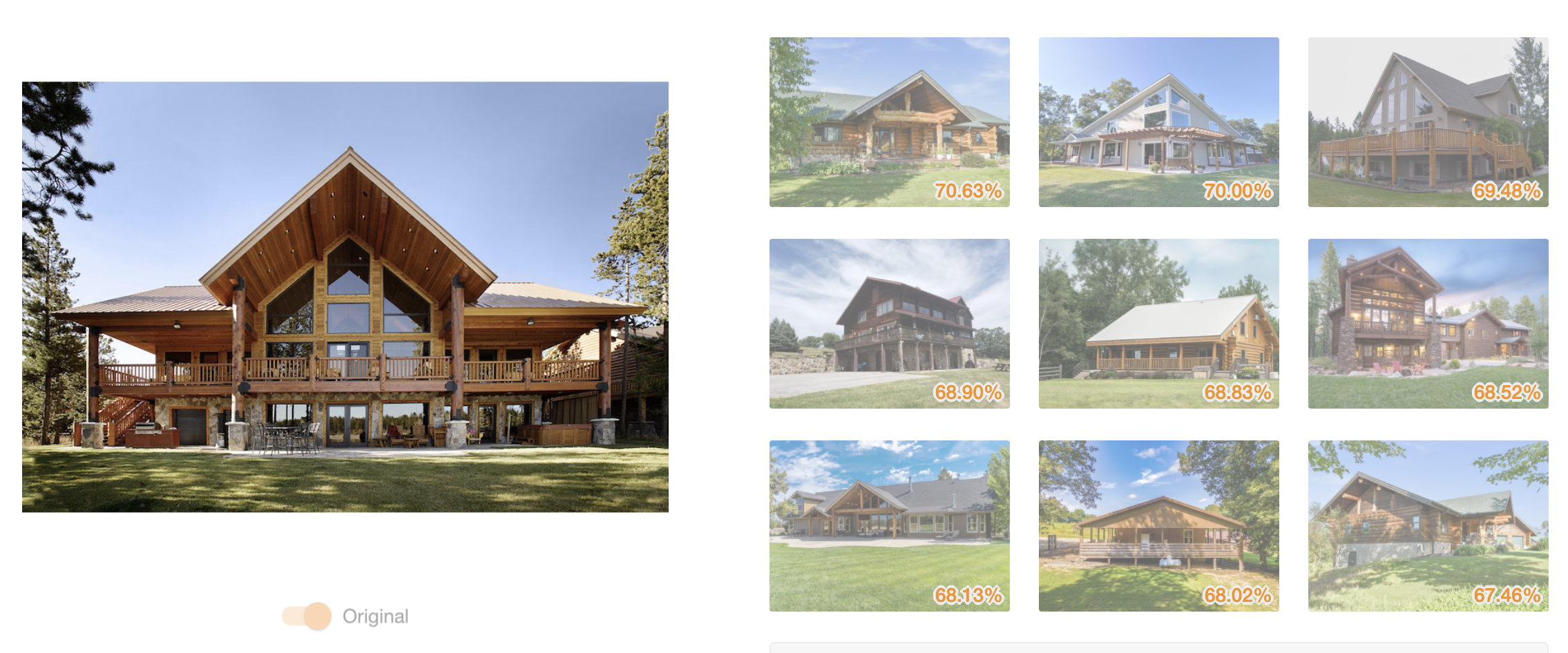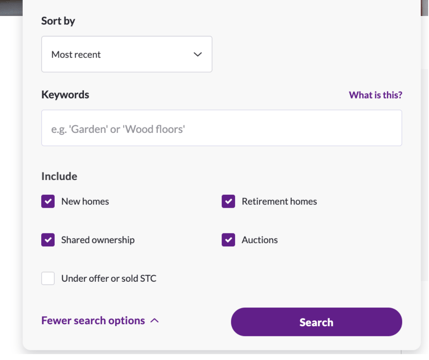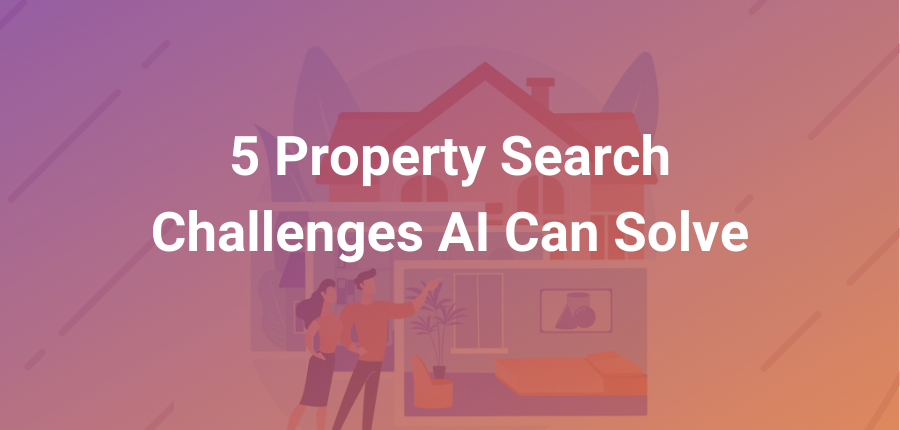By Helena on 8 March 2021
Property search is one of the most critical parts of a home buying journey. In fact, it is rated as one of the top three most difficult steps.
In most cases, that journey starts online. As millennials are becoming the largest group of home buyers in the market, online channels have become the preferred search tools for home discovery. Over half of the properties sold last year were found by their new owners on the Internet.
Despite the fact that 93% of the buyers used online portals to get information on potential properties, the average time they spent before actually reaching out to an agent was three weeks. So we’ve decided to break down some of the most common issues with property search that might be causing these delays and frequently harming the whole search experience.
1. Limited or Insufficient Search Filters
Filtering is essential to an easy, natural property search flow. However, many real estate sites still fail to provide a rewarding filter experience. Having either too few filters or filters that don’t return any results can make your search not only harder but also turn it into a complete nightmare.
Let’s take a married couple with two children that are looking to move out of the city to a house in the suburbs. Their dream home has:
- three bedrooms
- 2,500+ ft2
- a rustic style with high, beamed ceilings
- a garden with a barbecue area to invite their friends over on the weekend for child-friendly parties.
Can you imagine how long it would take that couple to find a home matching their needs on a website that only offers the typical set of filters, including the number of rooms, bathrooms, and square footage? Many portals still don’t allow filtering by home features or style, which in the case of this family would be critical.
Even sites providing numerous filters struggle to return high-quality results upon filter selection, as a result of poor data.

In that scenario, it seems that the family will need to spend countless hours cycling through the photos of hundreds of properties, diving into each one of the listings, just to immediately discard over two-thirds of them.
Comprehensive filtering should allow users to search by features like:
- home styles
- notable features (kitchen islands, coffered ceilings, etc.)
- finishes (hardwood floors, granite counters, etc.)
- and much more.
Plus, in a website that offers properties for sale or rent, filters should also be visual. For example, if that family is only interested in homes with a pool and an outdoor living space, why not let them filter the images displayed in their search results to display those features? Seeing the most relevant images would shorten their search and save countless hours cycling through less desirable properties.
At this point, you might be thinking ‘Great, I need more filters, hence more information. But how can I obtain such data if the agent or broker doesn’t include it in the listing?’.
Agents and brokers sometimes overlook certain information when populating listings in MLSs or portals’ systems, either because they have large portfolios to upload and very little time to do so, or just because they simply miss it.
That’s where AI comes to the rescue. Nowadays, image tagging solutions are able to extract data from images and auto-populate property listings with relevant features to allow for better search filtering.

Using image analysis, AI extracts particular features like high ceilings or skylights, fireplaces, or outdoor living spaces, and it even detects construction materials, like kitchen appliances made of stainless steel or tile floors.
2. Dull, Uninteresting Property Search Experiences
Property search should be FUN. When people are searching for a property to rent or buy, they are usually looking for a change or moving on to a new stage in their lives. They are usually excited! Your site search experience shouldn’t bore them with monotonous processes.
Finding new ways to make search enjoyable and comfortable is essential to keep potential homebuyers engaged and help them keep their interest up.
For this reason, property sites have started to implement new approaches that leverage AI to enhance the site’s usability and visitors’ experience. The most common AI solutions in this area are focused on personalization. Through the analysis of visitors’ behavior on your site, AI can tailor and output property recommendations that can either be used for email marketing automation or displayed as ads while they browse the Internet.

However, the one AI solution I find most amusing, yet also extremely helpful is the recommendation of visually similar properties. This visual AI creates a sort of Pinterest-like experience that provides homebuyers or renters with listings that better fit their taste. If you like the idea, you can see it in action here.
3. Unoptimized Text-Based Searches
In real estate, search bars have been traditionally used only to enter the location of the desired property. Filters have long monopolized search, and search bars were very rarely used to search for features or keywords up until recently.
However, in the last few years, real estate giants like Zillow in the US or Zoopla in the UK have started to include an additional free-text field in search forms that allows homebuyers to add specific details or elements they are looking for in a property.

Although free-text search is still not broadly used in real estate, it holds a huge potential to speed up homebuyers search.
In the past few years, AI has advanced in what’s known as Natural Language Processing or NLP. Traditional free-text search was based on keywords, so if home buyers wrote “plot”, “lot” or “parcel of land”, they would get very different results.
The issue with that was that it required website visitors to type in several keywords to find what they were looking for. Now, with natural language search, machines connect synonyms and expressions to better understand what a visitor is looking for and gather all possible relevant results together.
4. Search Queries Home Buyers Can’t Seem to Put Into Words
When searching for a product online, how many times have you tried dozens of different keywords just to never quite get the results you were looking for?
Homebuyers face the same problem, and traditionally, they have struggled to find ways to describe an idea, leading to endless search queries that lead nowhere.
However, that’s in the past now. With reverse property image search, it is now possible to find properties based on the visual features of a home you’ve seen in a magazine, or on a picture you took from a beautiful house you discovered while jogging last week.
Image search uses visual AI to analyze the query image and matches it to a portal’s listings to find the most similar ones. That’s why they say an image is worth a thousand words, or maybe even more!
5. Properties Unoptimized for Voice Search
We’ve covered text search, then image search. Now it’s time for voice search because it is here to stay.
Voice search not only helps busy people look and find products and properties anytime, anywhere, using services like Alexa. It also broadens your audience by helping visually impaired people access property listings the same way the rest of us do.

However, making your site accessible to everyone requires a lot of effort. Images need to have proper captions, and listings need thorough property descriptions. Luckily, the latest AI-solutions are able to automatically generate image captions and property descriptions for you in a matter of seconds, so you can sit, relax, and rest assured that everyone will be able to look for and find properties on your site.
If you want to know more about how AI can transform property search for your real estate business, we’re here to talk, just shoot us a message.



comments